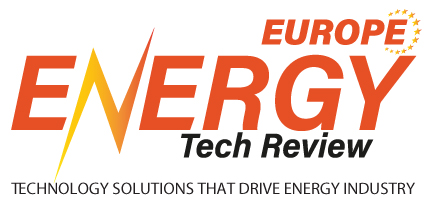The energy industry is experiencing a change unlike any in history almost like the telecommunication industry’s wireless transformation; the adoption of renewables, batteries, and electric vehicles is changing the electrical power system from a one-way, centralized, analog system. This is often profound in not only the mechanics of how electricity is delivered to finish customers, but also in how customers and other non-utility actors can interact and participate in power generation and consumption for the advantage of system reliability and resilience.
This transformation has been slowly chugging along for over a decade as more solar photovoltaic (PV) systems are attached to the grid, electric vehicles gain acceptance and market share, and energy storage systems are installed in commercial and residential buildings. An equivalent phenomenon is happening at scale as larger grid systems emerge with large PV and wind systems that replace peaker plants, corporate and public transportation fleets of electrical vehicles bring new capabilities and challenges to power networks, and grid-scale energy storage that allow portions of the facility network to work as independent microgrids.
"The democratization of the distribution system will create new business opportunities and clever, innovative approaches from individuals and corporations that previously had no chance to work within the monopolized markets”
We have reached the tipping point in numerous locations within the us and abroad that have inspired federal and state policy makers to debate the thought of building Distribution System Operator (DSO) functions to not only enable and manage this new paradigm of Distributed Energy Resources (DER), but to also establish market systems to assist balance power supply/demand and encourage within the monopoly world of electrical power utilities and non-homogenous policy goals, weather, DER adoption and penetration, and other local factors, a “one-size-fits-all” DSO implementation isn't only impractical, it's untenable.
But these new DSO functions also are necessary. It’s important to acknowledge that historically the utility’s responsibilities and visibility end at the meter. As more and more DER are added “behind the meter,” the road of demarcation at the meter creates new challenges for the utility in predicting, planning, and managing power. The California Independent System Operator (CAISO) explains these challenges with its famous “duck curve” forecast that shows increasing probability of over generation during daylight from PV systems and a rapid buildup for demand at sunset thanks to the loss of PV generation and increased consumption as homeowners return home.
The necessity to manage or potentially flatten this curve is becoming urgent. Our existing systems and therefore the physical constraints of the grid itself weren't designed for this sort of demand curve. This is often the genesis of the DSO conversation, and regulators’ recognition that we'd like to try to something different – and it must happen before you think
• Distribution Market Operator (DMO): Responsible for managing a platform for utility and third-party bids, offers, and bilateral transactions for distribution services, also as transaction clearing and settlement.
• Distributed Energy Resources Manager (DERM): liable for the monitoring, management, coordination and optimization of DER owned and operated by the utility, producers, or third-party aggregators. In other words, the DER Management System (DERMS) is liable for orchestrating DER interoperability on the distribution networks with “in-front-of” and “behind-the-meter” assets. There are other DSO functions that include planning and forecasting, but the 2 listed above are those that the majority recognizes because the profoundly transformative functions necessary to securely and reliably operate the grid within the duck curve scenario.
There are other benefits to establishing DSO functions that are more subtle, but even as important:
• Democratization of power supply and consumption: By creating a distribution market system, DER owners can participate within the overall balance of local power supply/demand and monetize their investments. It's important to know that DER devices could support power generation and/or demand reduction – PV systems are samples of distributed generation; smart thermostats which will be managed to scale back load are samples of “demand response” batteries are assets which will consume or supply power.
DSO functions incentivize investments in DER by creating opportunities for distribution network participants to monetize their investments and also support greater reliability and resilience within their local network.
• GreenHouse Gas (GHG) reduction: Whether you follow the conversations on heating or not, nobody can argue that sunlight and wind are free. Harnessing these free available power generation opportunities is practical and logical. Wide penetration of PV and wind DER assets reduces the necessity for traditional power plants and reduces GHG emissions.
• Reduction in electricity costs: Although there'll obviously be costs related to establishing the new DSO functions, over time the prices of electricity should drop. Reliance on local power resources instead of distant bulk generation plants and transmission systems will ultimately manifest in reduced construction and maintenance needs. Additionally, the prices of adding new DER to the system are going to be distributed across numerous actors rather than just the utility – and therefore the majority of latest DER systems won't require fuel or costly maintenance requirements.
• Inflated innovation: The democratisation of the distribution system can produce new business opportunities and clever, innovative approaches to people and firms that antecedently had no likelihood to control within a “New Energy Economy” can emerge that makes business worth that transcends the ability trade and becomes opportunities for world, research, and investors. It conjointly presents new opportunities for progressive utilities to supply new services, and generate additional revenue and profit.
Using these new DSO capabilities can result in lower energy prices, a decarbonized power generation economy, and larger efficiencies, resilience, power quality, and dependability.
This can be a successful biological process step needed to make a replacement Energy Economy that empowers utilities, consumers, producers, third-party aggregators, technologists, and new business models to make additional efficiencies, cleaner and cheaper power, higher dependency and additional resilience.




